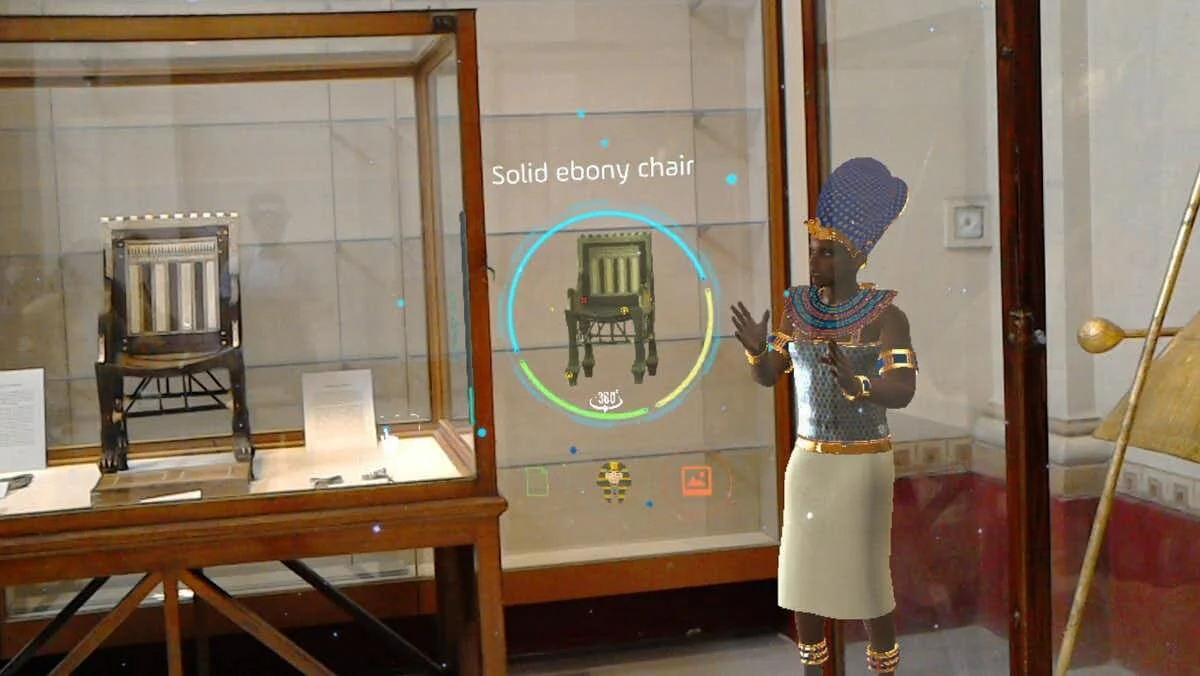The application of Virtual and Augmented reality in music has been around for a while. From collaborative creation and interactive music videos to its incorporation in art museums, it seems as if the arts industry is competing with itself to enhance the audience experience. As concerts are a highly user-oriented experience, these technologies have started gaining more traction in the live music space. The demand for interactive and immersive experiences has called for innovative models to be incorporated within music. Thus, the application of such models is added to the concert experience with the implementation of VR and AR technologies to help maximize its interactivity.
Art-Making & Storytelling for Social Good in VR
Those who have a vested interest in the arts are often curious: how is art impacting its audiences? The Americans for the Arts Arts + Social Impact Explorer presents ten categories for how art can impact the people in its communities, and it is the ultimate challenge of arts organizations to build innovative programs that improve their reach in all ten. To measure impact against this challenge, organizations may analyze ticket sales, subscriptions, donations, and audience surveys. Between income spreadsheet lines, however, there are more questions about how to improve engagement, and – central to this piece – when and how to incorporate new technologies into classic offerings to boost innovation.
Expanding our Live Streaming Future: Refining and Developing New Arts & Entertainment Experiences
Livestreaming has become a burgeoning global industry, recording eight billion hours of content watched in the last quarter of 2020 (May, 2021). This research projects examines the industry before the COVID-19 pandemic, how it evolved during the pandemic, and its future opportunities. From October to December 2020, over eight billion combined hours of content were watched as livestreams on the top three largest platforms, Twitch, YouTube, Facebook Live (May, 2021). Using data from industry leader interviews, a national survey, and case studies the team reveals the power and current technology limitations to livestreaming for the live entertainment industry.
Theatrical Livestreaming: Fostering the Next Generation of TheatreMakers
In my previous AMT-Lab article, Livestreaming And Live Theatre: A Promising New Industry, I presented the data and specifics of the current livestreaming market as a whole. During this research, I found that livestreaming viewership set record highs in 2020. Not only was livestreaming able to grow during the initial impact of the pandemic, but this interest was maintained throughout 2020 and into 2021. Livestreaming, as an industry, grew by 81% in 2020. The large potential for market utilization is undeniable. Most importantly, however, is that livestreaming theatrical events offer a level of access and opportunity to arts and cultural events that have yet to be capitalized.
2021 Top 10 Most-Read Articles
As we welcome 2022 for myriad reasons, be sure to catch up on what you missed in 2021 by reading out top 10 most read articles. Surprisingly (or not), while the last year continued to show interest in covid’s impact on technology and work, our readers were curious about a broad set of content — from NFTs to using technology to track dance. Which of these articles did you read, or miss?
Why Interactive Films Are Not A Success...Yet
Motion picture companies in recent years are blurring the line between film and video games, bringing technical practices that have been adopted by interactive video games for many years. With the drift of film history into greater realism and higher audience immersion interests, interactive films that make compromises for the audience to take control are emerging. Filmmakers use different new-media technologies such as Eko Studio and Wirewax to engage an audiences’ interaction, but the medium is still so young that more extensive research is needed. This research examines the differences between the engagement models of interactive films and video games to identify the reasons why interactive films do not obtain a larger market.
Livestreaming and Live Theatre: A Promising New Industry
These last two years have forced audiences to seek out arts opportunities and engagements through new mediums. Theatre organizations around the world closed their doors, forced to look for new ways to interact with their audiences. Many turned to digital content, such as streaming and livestreaming. While these two mediums appear to be similar, they are entirely different forms of media. “Livestreaming is when the streamed video is sent over the Internet in real-time, without first being recorded and stored.”[1] It allows for increased engagement with audiences and in many cases, livestreams allow for audiences to directly interact with the host through chat features, polls, and subscriptions.[2]
Can Computers Be Creative? A Look at AI Use in Music Composition
When we think about AI, it generally is with some amount of wariness. We’ve all seen too many science-fiction movies where sentient robots take over the world, but we’re mostly certain that the creativity needed for these sentient beings to overtake us doesn’t exist. Artists, musicians, and creatives especially have historically been comfortable with the knowledge that their livelihoods were not in danger of being replaced by AI because of the inherent creativity necessary in those industries… until now.
Living in a Deepfake World
Deepfakes, or AI-generated synthetic media, are becoming increasingly prominent in the digital age and are being used across industries more frequently than ever before. Unlike common uses of AI that modify existing media given, AI that generate Deepfakes attempt to simulate that media, often using an individual’s likeness as a source of AI learning. Deepfakes can be a fun experiment for swapping faces, but they present a wide variety of malicious uses that has permanently altered the trust and engagement of media. Thus, society must continue to challenge the validity of sources and find new ways to protect media and the truth.
What is MR and How Does it Create Exceptionally Immersive Experiences?
MR, or Mixed Reality, is appearing across the arts world, but its actual meaning is not well understood. A strong beginning includes a foundational understanding of the concepts of reality and virtuality. The future application of MR technology is unlimited, increasing the possibility of creating experiences that reflect what is seen in sci-fi films. While many practitioners believe that MR is the future, the technology lacks popularity in the consumer market. However, with the continuous development of MR technology, more cost-effective solutions will be found, and the future of a truly immersive experience will come.















